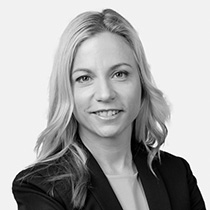The Fund returned 4.5% for the quarter (Q2-23), benefiting from its meaningful exposure to offshore equities and fixed income positions that were acquired during 2022. The Fund has performed well against its peer group over all meaningful time periods.
FUND POSITIONING
Global markets have delivered a strong performance year to date (YTD), with the MSCI All Country World Index up 14% YTD (+6% for the quarter). Fears of a US recession are receding in the face of robust employment data and resilient consumer demand. The S&P 500 Index rose 9% for the quarter (and is now up 17% YTD) to end the quarter at a level that is within 10% of its December 2021 high. The relaxation of prudential limits in 2022 (which enabled an increase in the Fund’s maximum offshore allocation to 45%) allowed the Fund to build a much bigger position in offshore assets than it has been able to in the past. We took full advantage of market weakness during 2022 to build a sizeable position in global equities. The extent of the market recovery means that upside largely lies in stock picking from here. The much-touted post-covid Chinese recovery has disappointed. Weaker-than-expected Chinese growth has resulted in softer commodity prices. Oil too was lower, despite OPEC’s efforts to reduce supply.
Central banks continued to raise rates during the quarter given persistently high inflation. Although the US Federal Reserve Board announced a pause in the rate hiking cycle in June (as inflation moderated), further increases are likely. The Bloomberg Barclays Global Aggregate Bond Index declined -1.5% for the quarter (up 1.4% YTD). Bond yields are closer to normal levels, but still offer inadequate compensation for heavily indebted sovereign balance sheets, in our opinion. The Fund has no exposure to developed market sovereign bonds. This is consistent with its positioning for many years. Unlike the narrow credit spreads in South Africa (SA), global credit bonds offer more attractive pricing, and we hold a basket of credit names trading on high single-digit US dollar yields.
In SA, the FTSE/JSE Capped Shareholder Weighted Index returned 1% for the quarter (+4% YTD). The pricing of SA equities remains attractive, with broad value across resources, global stocks listed on the JSE, and domestics. The SA economy continues to face numerous headwinds as declining infrastructure (including power, water, and rail) and services undermine productivity and growth. These challenges, combined with foreign policy missteps, undermined the currency (which weakened 6% against the USD for the quarter and by 10% YTD). The sustainability of the reduced levels of loadshedding in the last few weeks is uncertain. Planned maintenance is running below what we believe is required. Challenging production, combined with falling prices of key metals (coal and Platinum Group Metals [PGMs]), will weigh on export revenues in 2023. The long-term fiscal outlook has deteriorated meaningfully in the face of structural revenue pressures, the rising costs of servicing debt, wage/salary increases, and bailouts for municipalities and State-owned enterprises.
The FTSE/JSE All Bond Index delivered a return of -2% for the quarter (+2% YTD). Despite high government bond yields, the Fund has reduced its holding in government bonds and is meaningfully underweight the asset class. We are very concerned about the sustainability of the SA sovereign’s level of indebtedness. Economic growth is poor, indebtedness has increased meaningfully since pre-pandemic levels, deficits cannot be reduced without significant socio-political consequences and debt servicing costs are consuming an ever-increasing portion of expenditure. Part of our bond holding sits in inflation-linked bonds that offer protection from sticky domestic inflation (exacerbated by rising costs of production).
Within the domestic universe, considered stock picking is required to identify businesses that can deliver real earnings growth despite the subdued growth outlook and rising costs of doing business. A slew of weak results across the retailers has illustrated the pain that comes when costs grow faster than the top line. We favour companies with strong business models that can grow faster than the underlying economy and can pass cost pressures on to customers.
The financial sector returned 6% for the quarter (+6% YTD). The Fund has a sizeable holding in the banks, given their low ratings and attractive high single-digit dividend yields. This is further supported by good capital positions. Although they are exposed to the tough consumer environment, conservative advances growth into this cycle and high levels of provisioning should mitigate credit losses. The banks also benefit (to varying degrees) from higher interest rates on lazy deposits and capital. Corporate lending is expected to bolster revenues.
The resource sector was down -6% for the quarter (-11% YTD). Slower global growth and weaker-than-expected Chinese demand have resulted in market imbalances and price declines across many commodities. The Fund cut its resources exposure meaningfully over the last two years as we exited PGMs and gold shares and took profits on the diversified miners. The underweight position in PGMs has benefited the Fund over this period, although the gold underweight has detracted. The long-term outlook for PGMs has deteriorated as electric vehicle adoption accelerates and local producers battle rising costs of production. We have no exposure to pure play PGM producers.
Domestic gold producers have also battled rising production costs over time. AngloGold’s recent operational performance was disappointing in this regard. We don’t believe that the ratings of the SA gold shares offer a sufficient margin of safety for the short life, high-cost nature of their assets. The bulk of our resource exposure sits in Glencore, Anglo American, and energy names. The diversified miners offer attractive free cash flow streams, even at more normal commodity prices, and we have maintained a reasonable holding. We expect energy markets to be tight over the medium term as demand remains robust during the transition to lower carbon energy sources and the lack of investment in new capacity over the last few years constrains supply. We have diversified our energy holdings across a global basket of names to reduce company-specific risk.
The Industrials Index rose 3% for the quarter (+17% YTD), led by many of the global stocks listed in SA. Richemont, Aspen, Bidcorp, and Anheuser-Busch InBev are all meaningful holdings that have contributed to the Fund’s YTD performance. Naspers/Prosus remains a sizeable holding in the Fund. We were pleased by recent management actions that, once again, illustrated their commitment to narrowing the discount and maximising shareholder value. As part of the recent results, management announced the simplification of its corporate structure, which involves removing the previously created cross shareholdings. This cross shareholding created complexity and most likely contributed to the persistent discount to net asset value. This simplification also removed any constraints to Naspers’s ongoing share buyback programme, which continues to create shareholder value at both Prosus and Naspers on a daily basis.
The portfolio has limited property exposure, preferring to use its risk budget in equities. The property sector has lagged equities (five-year -5% CAGR). A weak economy, nodal decay, and chronic cost pressures undermine the medium-term outlook.
OUTLOOK
While headwinds exist in both global and domestic markets, we believe growth assets (enhanced by good stock picking) offer the best medium-term returns. A diversified portfolio of global equity (and some global credit) should provide attractive risk-return benefits, supplementing a basket of cheaply priced local equities.
Disclaimer
SA retail readers
 South Africa - Personal
South Africa - Personal



